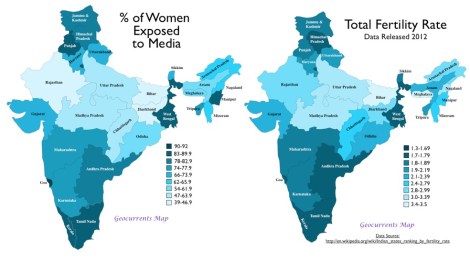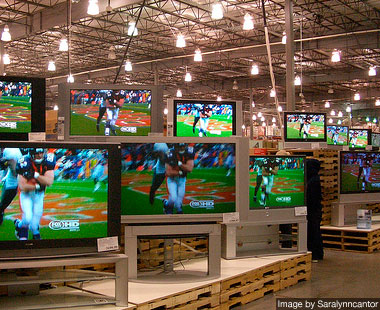TV isn’t exactly an environmentally friendly form of entertainment. Ever-improving screens and all their associated gadgets need, according to the law of conspicuous consumption, to be replaced as soon as financially possible once a better model comes along, and they’re energy-vampires.
But no matter how much energy they suck up, TVs are still more environmentally friendly than those energy-intensive creations known as children.
And, as Brad Plumer writes at the Washington Post, as a country’s TV ownership grows and more women are exposed to media, the fertility rate begins to decline. He explains:
This isn’t as bizarre as it seems. A 2009 paper (pdf) by Robert Jensen and Emily Oster found that the introduction of cable television “is associated with significant decreases in the reported acceptability of domestic violence towards women and son preference, as well as increases in women’s autonomy and decreases in fertility.” It’s far from certain that television alone is driving these changes, but the evidence is suggestive.
Look how this plays out in India, for instance:

Breakthrough InstituteClick to embiggen.
The dark areas of the map on the left correspond to high rates of media exposure. And the dark areas of the map on the right correspond to lower birthrates. Now, you can tick off other factors that might connect these two trends — like income, for instance. But the essay from which Plumer pulled this map checks up on those. The connection between fertility and TV ownership is the strongest of the whole bunch.
You should probably NOT use TV as your main contraception method, but apparently it’s true: Some people only have sex when there’s nothing good on. And that’s good news for the climate.




